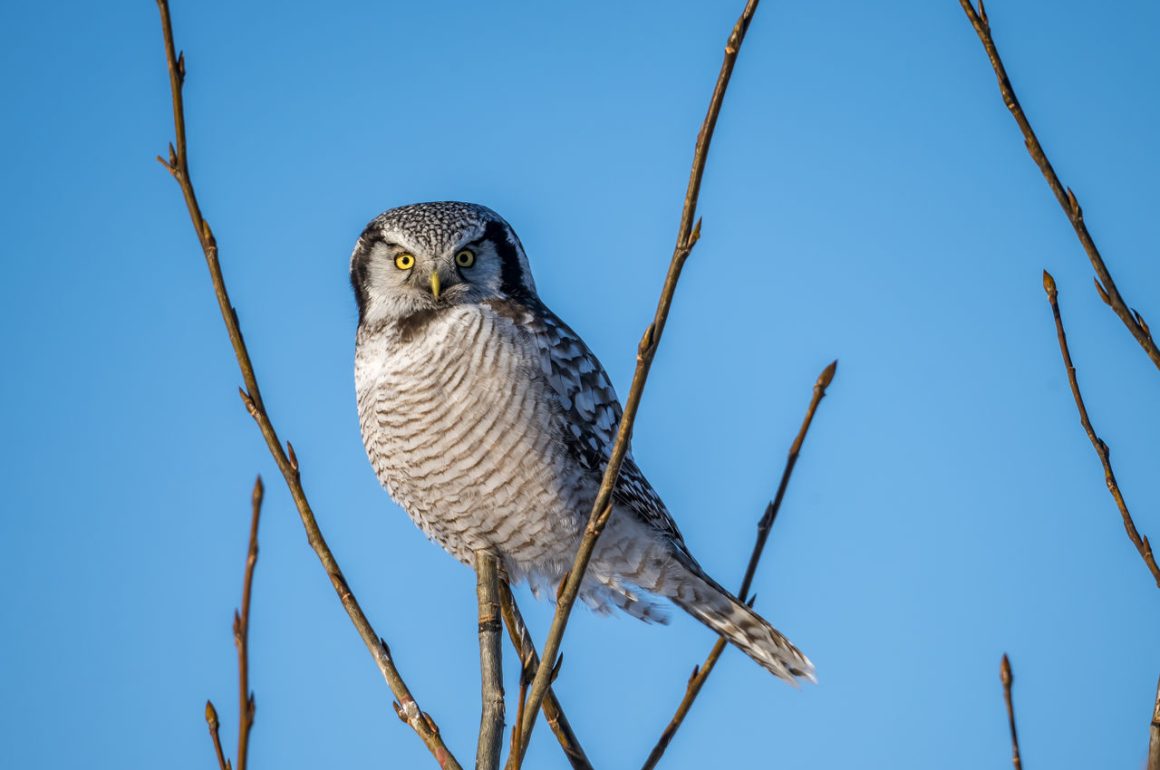
While ulula sounds like a stupid dance people going on Caribbean cruises are forced to participate in, it is also part of the Latin name of the Northern Hawk-Owl, Surnia ulula. Ulula means owl in Latin.

According to the American Bird Conservancy, it is also known as the Canadian Owl, much as the Gulf of Mexico is known as the Gulf of America among MAGA enthusiasts. Just don’t use that name for the approximately 50% of the owl population not living in North America.
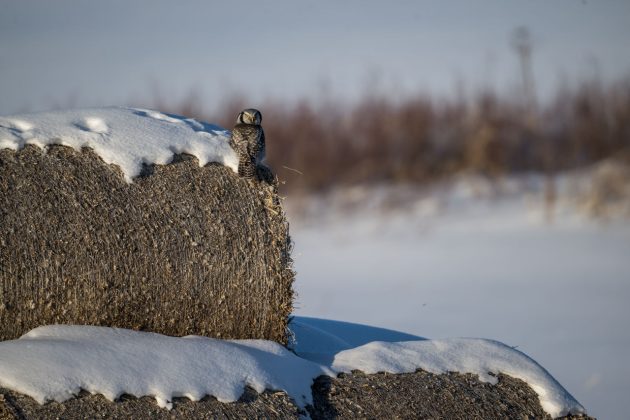
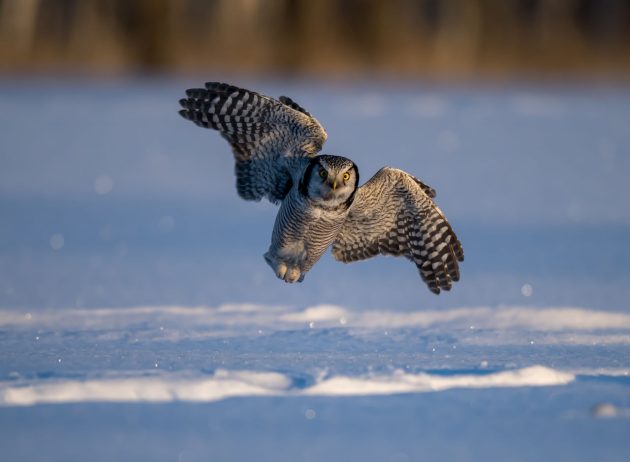
Compared to the other owls I saw on this Inner Mongolia trip, this owl is a fast and direct flyer, flying more like a hawk than an owl (thus the name, I guess).
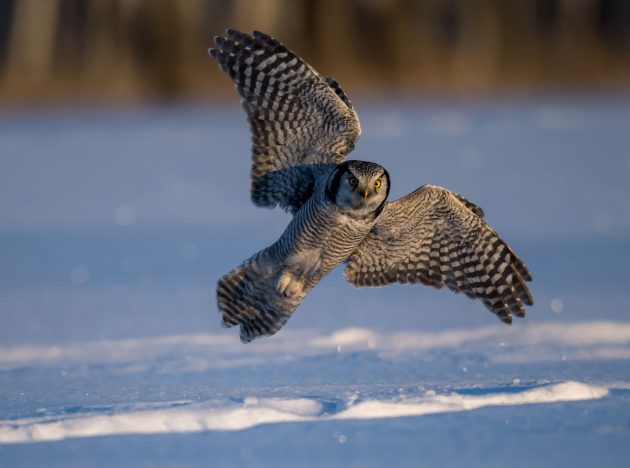
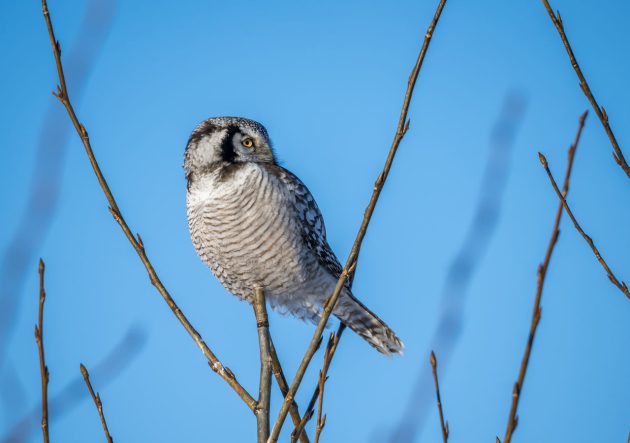
Maybe that makes eBird call it a “Unique medium-sized owl of the boreal forest”.
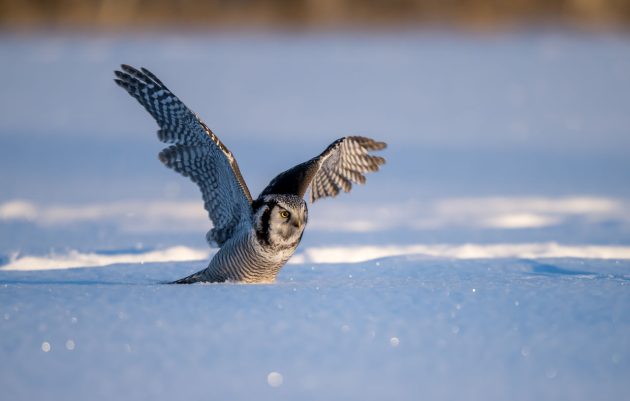
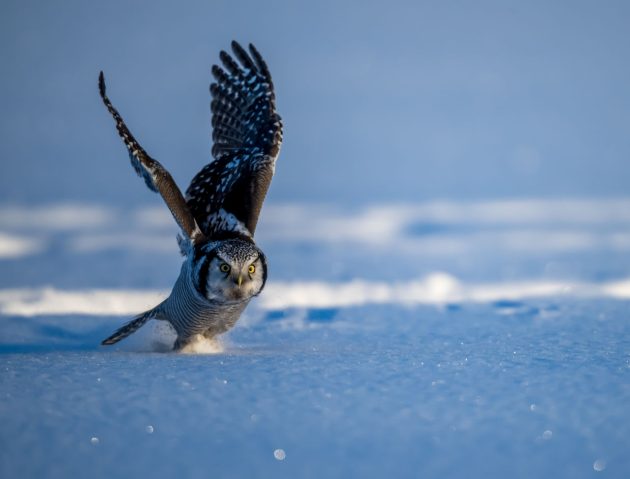
eBird also adds that its “Pale eyes give it an angry look”.
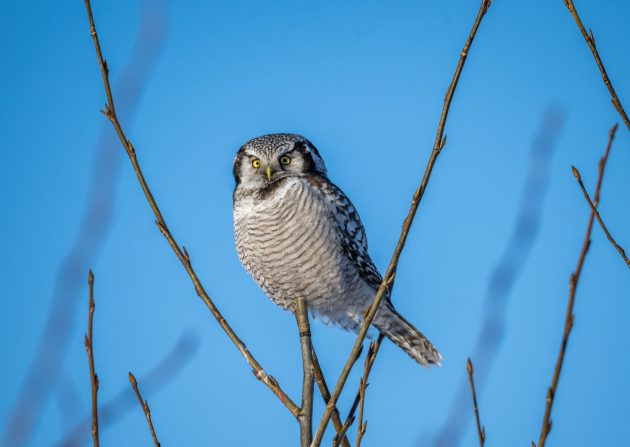
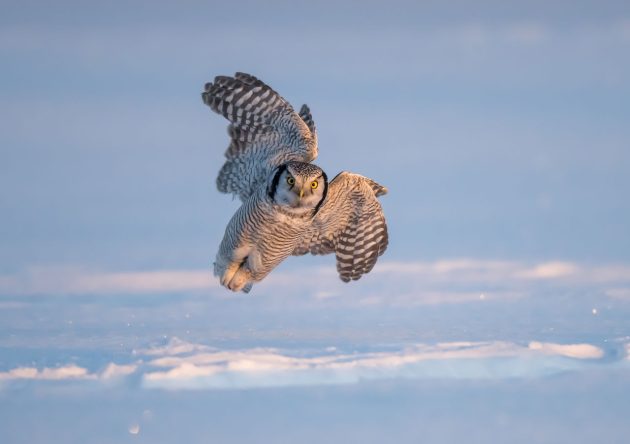
This owl is surprisingly unafraid of people (including the birder subspecies) – it is also relatively easy to spot as it likes to perch on top of trees rather than hide somewhere in the middle.
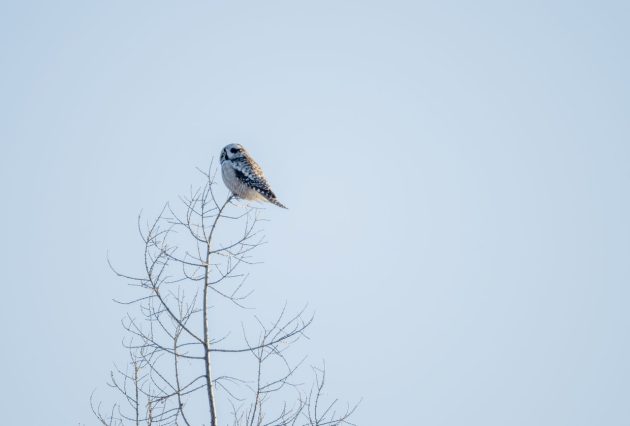
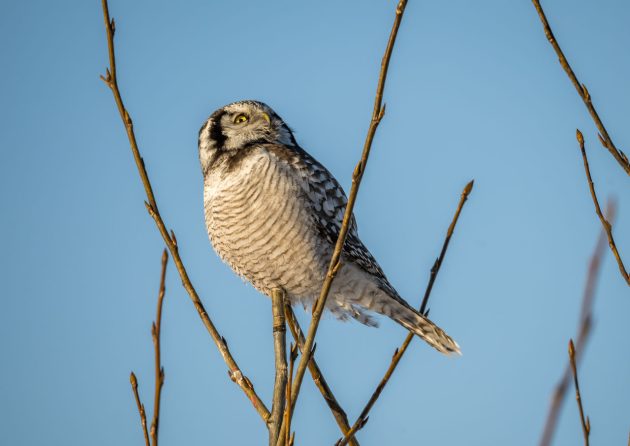
Northern Hawk-Owls locate their prey visually from elevated perches and prefer open space for scanning and attacking – one source therefore claims that clear-cutting old forests actually helps the owl.
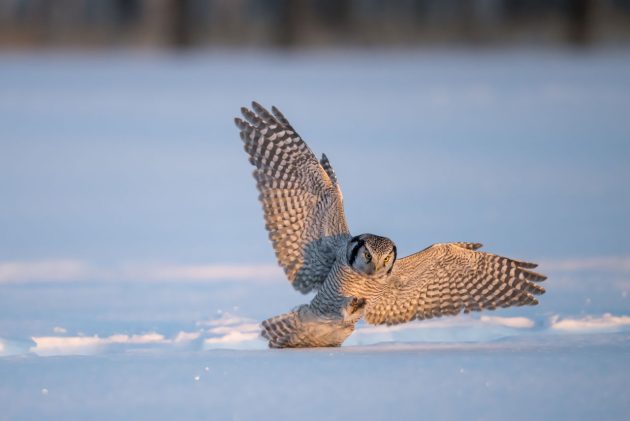
It is also an owl that is mainly active in the daytime, maybe with the objective of smashing stereotypes of owls as being night creatures.
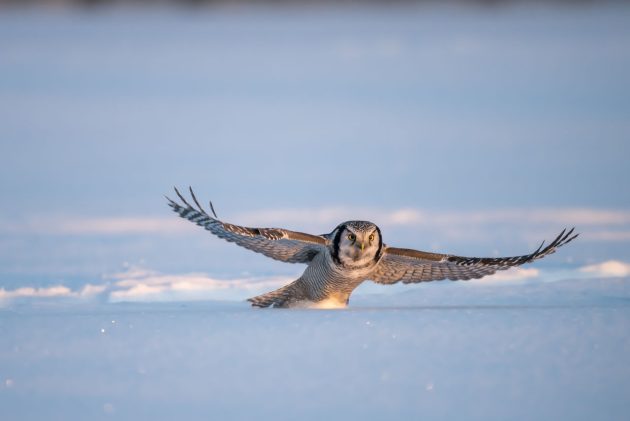
When feeding nestlings, the peak prey delivery times therefore were after sunrise and before sunset, with a low around midnight (source).
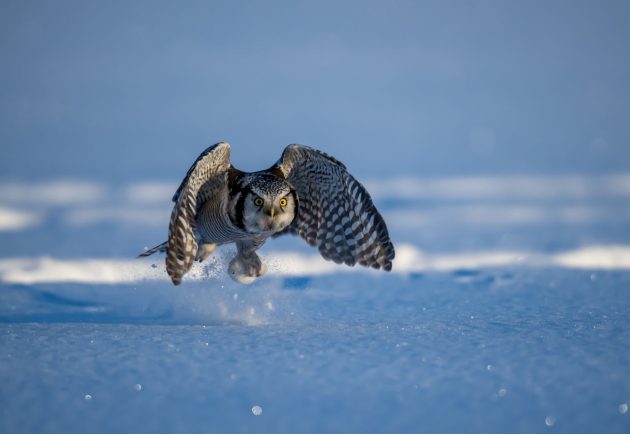
Northern Hawk-Owls store excess prey items for later consumption (source) – convenient in winter, when all their habitat turns into a giant refrigerator anyway.
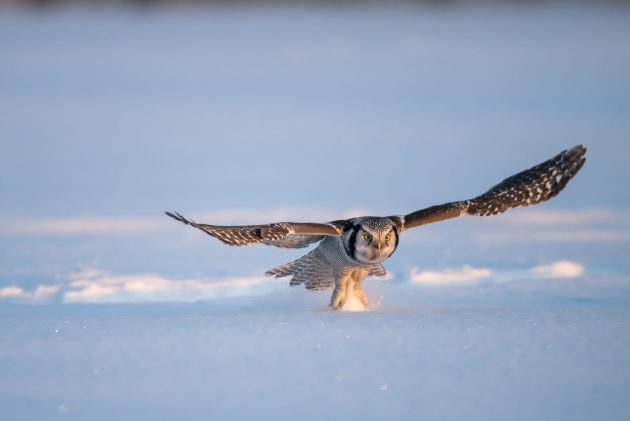
They also scavenge – there is one report of an owl returning to the carcass of a Canada lynx multiple times.
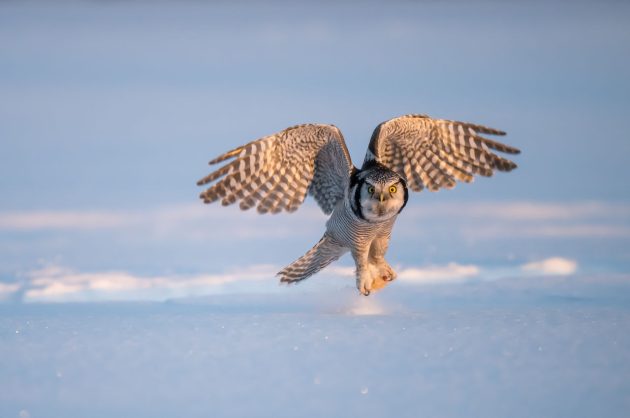
They use nest boxes – if you want to see a cute photo of 4 chicks looking a bit peeved, visit this link.
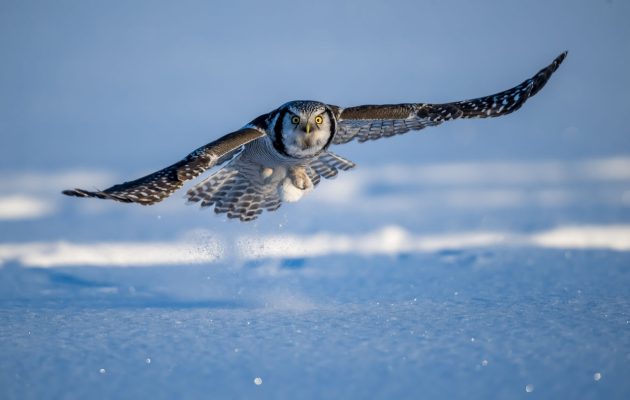
Like some other owl species living far north, larger numbers of Northern Hawk Owls occasionally move south, driven both by food scarcity in the north and high food availability further south (source).
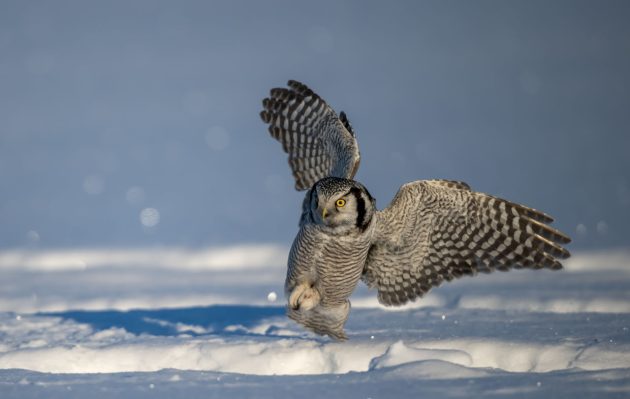
Some researchers argue that the cyclicality of these irruptions indicates that the prey – small rodents – must have a multi-year population cycle.
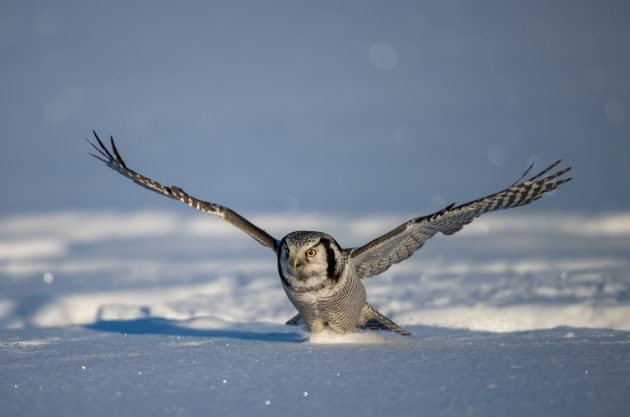
While the Northern Hawk-Owl is categorized as Least Concern, it faces some risks from shooting and trapping. In particular, a 1994 report on Ontario birds mentions that the owl is sometimes called the “practice owl” by northern residents due to its use of open perches at daytime. Hopefully, that term is dying along with the people who did the shooting.
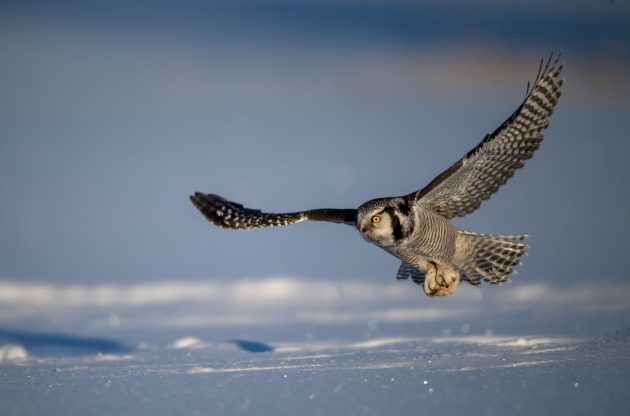


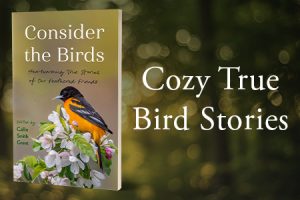

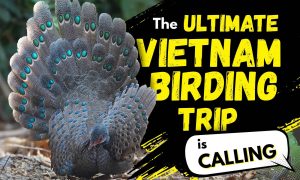
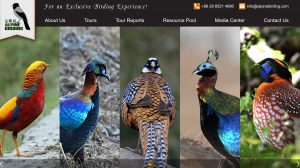

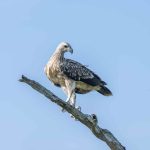
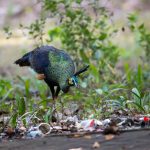
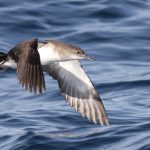
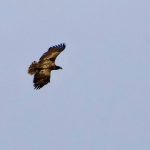

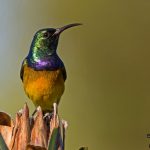
Great pictures and interesting commentary: Hawk Owls are stunning birds.